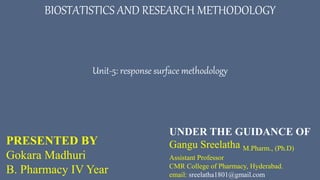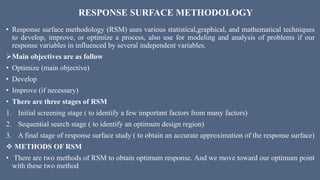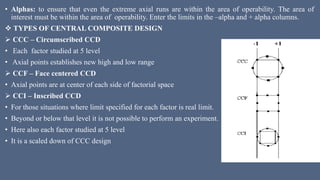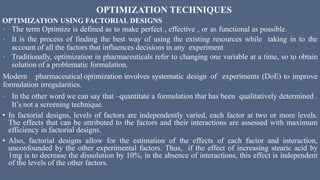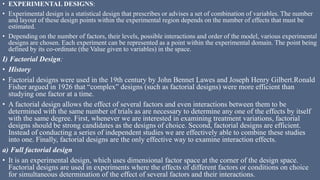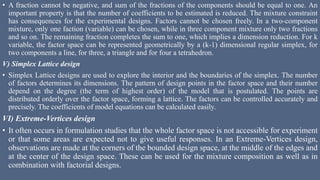The document discusses response surface methodology (RSM), which utilizes statistical and graphical techniques to optimize processes and analyze problems influenced by multiple independent variables. It outlines three stages of RSM, two primary methods for optimization (steepest ascent and descent), and various applications across different scientific fields. Additionally, the document covers central composite designs, historical research design, and optimization techniques in pharmaceutical contexts.
